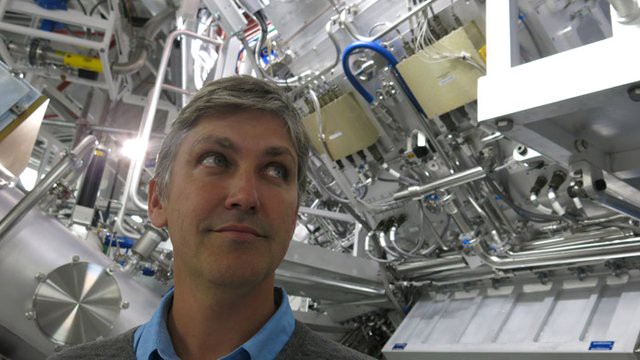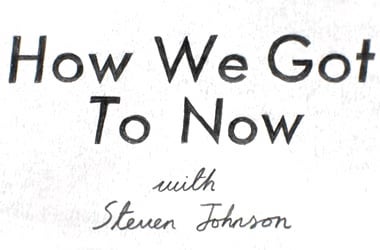

The fourth episode of How We Got To Now focuses on the idea of light. We asked Steven Johnson for some behind-the-scenes stories.
What was the most surprising idea you discovered in making this episode?
I was fascinated by some of the more gruesome elements in the history of whaling, which is central to the story because the spermaceti candle, made from whale oil, was the most advanced form of artificial light from about 1700 to the middle of the 19th century. In order to extract the oil from the sperm whale, they used to make a teenaged boy crawl around in the skull of a dead whale and scrape the oil into a bucket.
Many of the ideas you discuss developed a long time before they had their biggest impact. What was the biggest “slow hunch” in this episode?
The story of the invention of the electric lightbulb shows us how we like to compress the history of innovation down into “lightbulb moments,” instead of slow hunches. Most school kids hear the story that Thomas Edison invented the lightbulb in 1879, when in fact dozens of people had been slowly inventing it for decades–each contributing different pieces to the puzzle. There was no lightbulb moment in the history of the lightbulb.
What was the most incredible moment in filming this week’s episode?
We went out off the coast of Massachusetts to shoot a sequence about whaling, hopefully with an actual whale spouting behind me as I told the story of the spermaceti candle. But of course, you can’t just conjure up a whale on demand in the middle of the Atlantic Ocean, so I was worried we’d spend a whole day shooting and never actually find a whale. But sure enough, we tracked one down, and managed to get a whole series of amazing shots with me delivering the lines as the whale surfaced over my shoulder.
Was there a story or idea that you loved that didn’t make it into the final episode?
In the book, I have a long discussion about the way in which the neon lights of Las Vegas influenced the writing of the hugely influential book Learning From Las Vegas, which is in many ways the founding text of postmodern architecture. Venturi and Brown (and the Yale grad students they brought to Vegas to study it) were obsessed with the neon signage of the strip, and did a number of extensive studies of it. It’s a great example of how a scientific discovery can morph into a commercial enterprise and then set off ideas in the creative arts or philosophy. But it was just a bit too esoteric to walk through the history of postmodernism on television, so we only allude to the connection.
This week’s episode is about light. What is the most important idea or innovation on this theme emerging right now?
At the end of the episode, we visit the National Ignition Facility at Livermore Labs in California, where they are using a massive collection of lasers to create nuclear fusion. For a split second, while we were there, they created the hottest place in the solar system–hotter than the interior of the sun. The idea is that in the long run this could be a source of safe, renewable energy, created in part with laser light. It’s an amazing place, and it may well turn out to be the future of energy.


How We Get To Next was a magazine that explored the future of science, technology, and culture from 2014 to 2019. Steven Johnson’s How We Got To Now was published by Riverhead Books in 2014, and adapted into a six-part TV show by Nutopia for PBS in 2015. Click the logo to read more about how the show was made.
